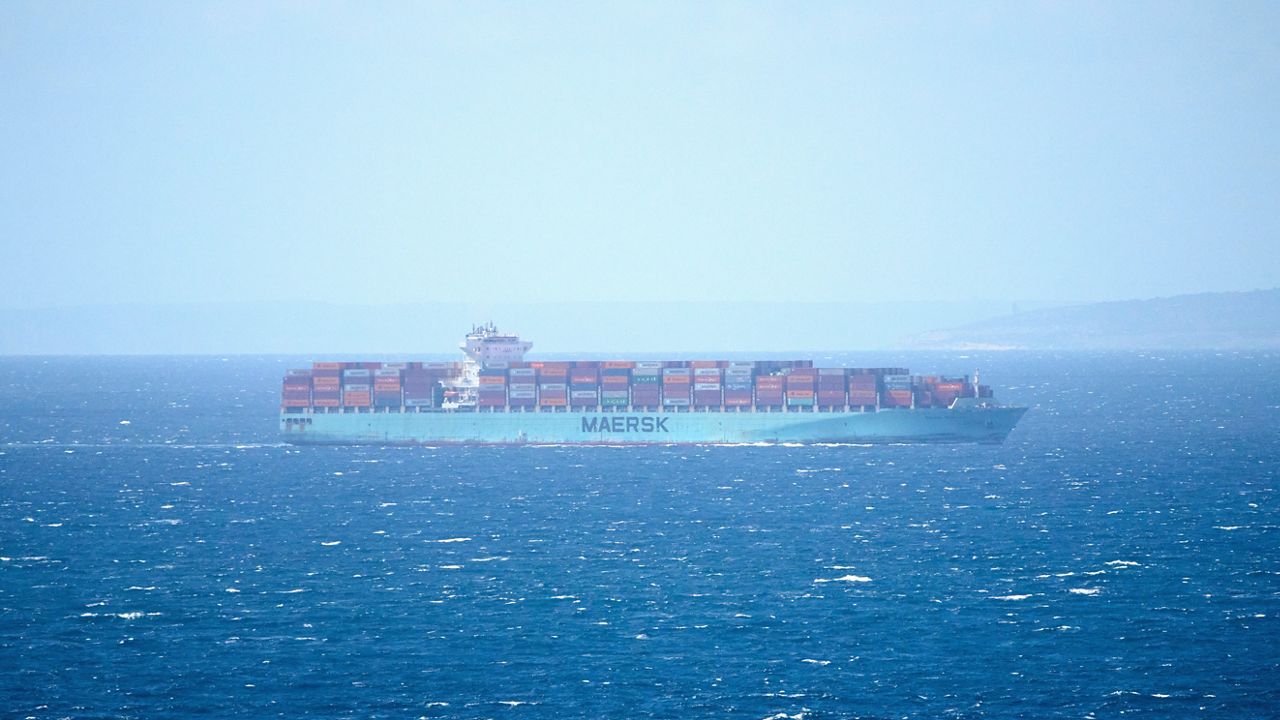Employment Assessment for Youth on the Move in Mexico City (2025) – ReliefWeb

Report on Labor Integration for Youth on the Move in Mexico City
1.0 Introduction
An assessment was initiated in June 2025 by the International Rescue Committee (IRC) to analyze the labor integration challenges and opportunities for migrant, refugee, and asylum-seeking youth in Mexico City. This report synthesizes the findings, focusing on the barriers that impede access to dignified employment and economic inclusion, thereby directly impacting the achievement of the Sustainable Development Goals (SDGs), particularly SDG 8 (Decent Work and Economic Growth) and SDG 10 (Reduced Inequalities).
The study utilizes a market-systems perspective and a participatory approach, integrating qualitative and quantitative data with insights from the private sector and civil society. The objective is to provide actionable recommendations that foster inclusive economic environments in line with the 2030 Agenda for Sustainable Development.
2.0 Identified Barriers to Labor Integration
The assessment identified three core categories of barriers preventing youth on the move from securing meaningful employment, which directly contravenes the principles of several SDGs.
2.1 Institutional Barriers
These challenges relate to systemic and governmental processes that hinder progress towards SDG 16 (Peace, Justice and Strong Institutions) by failing to provide accessible and inclusive services.
- Legal and documentation challenges
- Prohibitive administrative costs for regularization
- Limited access to formal regularization pathways
2.2 Structural Barriers
Structural economic issues undermine efforts to achieve SDG 8 by perpetuating precarious work and failing to leverage human capital effectively.
- High prevalence of labor market informality
- Systemic underutilization of skills and talent
- Lack of mechanisms for foreign degree and qualification recognition
2.3 Social Barriers
Social and cultural obstacles create significant challenges to achieving SDG 10 by fostering environments of exclusion rather than inclusion.
- Widespread discrimination and social stigma
- Cultural and linguistic differences
3.0 Recommendations for Advancing Sustainable Development Goals
To address these barriers and accelerate progress on the SDGs, the report proposes a multi-stakeholder approach, aligning with SDG 17 (Partnerships for the Goals). The following recommendations are directed at key actors:
- Government Institutions: To advance SDG 16 and SDG 8, authorities should streamline and reduce the cost of regularization processes, establish clear pathways for credential recognition, and enforce anti-discrimination labor laws.
- Civil Society Organizations: To support SDG 1 (No Poverty) and SDG 10, organizations should expand programs that provide legal aid, skills training, and cultural integration support for youth on the move.
- Private Sector Companies: To contribute to SDG 8, companies are encouraged to adopt inclusive hiring practices, partner with civil society to identify and train talent, and create mentorship programs that facilitate the integration of young refugees and migrants into the workforce.
1. SDGs Addressed in the Article
-
SDG 8: Decent Work and Economic Growth
The article’s central theme is the “labor integration” of young refugees, migrants, and asylum seekers. It directly addresses the challenges of achieving full and productive employment for this specific group, highlighting barriers like “informality” and “underutilization of talent,” which are core concerns of SDG 8.
-
SDG 10: Reduced Inequalities
The text explicitly points out “social barriers” such as “discrimination” and “stigma” faced by youth on the move. By focusing on the unique challenges of a vulnerable population (migrants, refugees) and advocating for their inclusion, the article directly relates to the goal of reducing inequalities within and among countries.
-
SDG 16: Peace, Justice and Strong Institutions
The assessment identifies “institutional barriers” like “legal and documentation challenges” and “limited access to regularization.” These issues highlight the need for inclusive and effective institutions that can provide legal identity and access to justice for all, which is a key aspect of SDG 16.
-
SDG 4: Quality Education
The mention of “lack of degree recognition” as a structural barrier connects the issue of labor integration to the education system. This barrier prevents skilled youth from utilizing their qualifications, touching upon the goal of ensuring that education and training lead to relevant skills for employment.
-
SDG 17: Partnerships for the Goals
The article concludes by offering “actionable recommendations for government institutions, civil society, and companies.” This call for a multi-stakeholder approach to strengthen labor integration pathways embodies the spirit of SDG 17, which emphasizes collaboration to achieve sustainable development.
2. Specific SDG Targets Identified
-
Target 8.5: Full and productive employment and decent work for all
The entire article is framed around achieving “labor integration” for “youth on the move.” This directly aligns with the target of achieving full, productive, and decent work for all, including young people and migrants.
-
Target 10.2: Empower and promote the social, economic and political inclusion of all
The assessment’s goal is to understand barriers to labor integration to support the economic inclusion of young refugees, migrants, and asylum seekers, irrespective of their origin or status. The focus on overcoming “social barriers” like discrimination is central to this target.
-
Target 10.7: Facilitate orderly, safe, regular and responsible migration and mobility of people
The article highlights “limited access to regularization” and “legal and documentation challenges” as major barriers. Addressing these issues is fundamental to implementing well-managed migration policies as called for in this target.
-
Target 16.9: Provide legal identity for all
The “documentation challenges” mentioned in the article are directly related to the lack of a recognized legal identity for migrants and refugees in Mexico City. A legal identity is a prerequisite for formal labor market participation, making this target highly relevant.
-
Target 4.4: Increase the number of youth and adults with relevant skills for employment
The article points to the “underutilization of talent” and “lack of degree recognition” as problems. This implies that youth possess skills that are not being recognized or used, which is a direct obstacle to achieving this target’s goal of ensuring skills lead to employment.
3. Indicators Mentioned or Implied
The article does not mention any specific, quantitative SDG indicators. However, as a qualitative assessment of barriers, it implies several areas where measurement is needed to track progress towards the identified targets. These implied indicators include:
-
Proportion of youth migrants in formal employment
This is implied by the discussion of “informality” as a structural barrier. A key measure of success in labor integration would be the rate at which this group moves from informal to formal work.
-
Number of migrants and refugees who have their foreign qualifications recognized
This is directly implied by the identification of “lack of degree recognition” as a key barrier. Tracking the number of recognized qualifications would measure progress in overcoming this specific challenge.
-
Time and cost associated with migrant regularization procedures
The article points to “administrative costs” and “limited access to regularization” as institutional barriers. Measuring the efficiency and accessibility of these procedures would be a key indicator of institutional performance.
-
Reported incidents of discrimination against migrants in the workplace
This is implied by the mention of “discrimination” and “stigma” as social barriers. A system to track such incidents would be necessary to measure progress in creating a more inclusive labor market.
4. Summary Table of SDGs, Targets, and Indicators
| SDGs | Targets | Indicators (Implied from the Article) |
|---|---|---|
| SDG 8: Decent Work and Economic Growth | 8.5: Achieve full and productive employment and decent work for all, including for young people. | Proportion of young migrants, refugees, and asylum seekers in formal employment. |
| SDG 10: Reduced Inequalities | 10.2: Empower and promote the social and economic inclusion of all, irrespective of origin or other status. | Number of reported incidents of workplace discrimination based on migrant status. |
| SDG 10: Reduced Inequalities | 10.7: Facilitate orderly, safe, regular and responsible migration and mobility of people. | Percentage of migrant youth who have successfully completed regularization procedures. |
| SDG 16: Peace, Justice and Strong Institutions | 16.9: Provide legal identity for all. | Average time and cost for a refugee or migrant to obtain legal documentation required for employment. |
| SDG 4: Quality Education | 4.4: Increase the number of youth and adults who have relevant skills for employment. | Rate of recognition of foreign degrees and qualifications for youth on the move. |
| SDG 17: Partnerships for the Goals | 17.17: Encourage and promote effective public, public-private and civil society partnerships. | Number of active partnerships between government, companies, and civil society aimed at migrant labor integration. |
Source: reliefweb.int
What is Your Reaction?
 Like
0
Like
0
 Dislike
0
Dislike
0
 Love
0
Love
0
 Funny
0
Funny
0
 Angry
0
Angry
0
 Sad
0
Sad
0
 Wow
0
Wow
0














































































